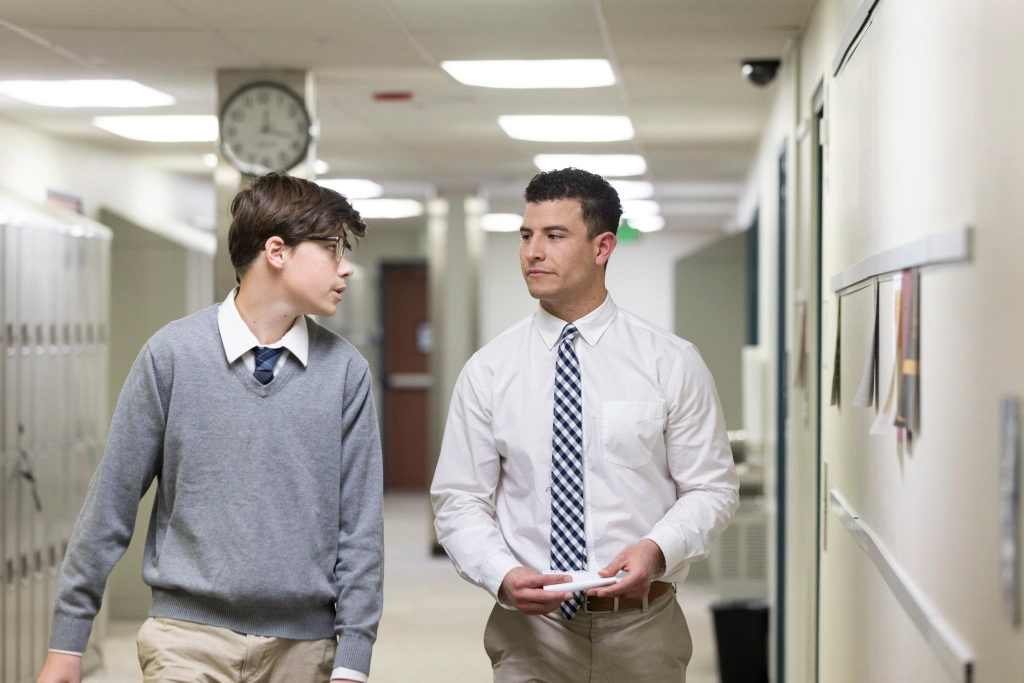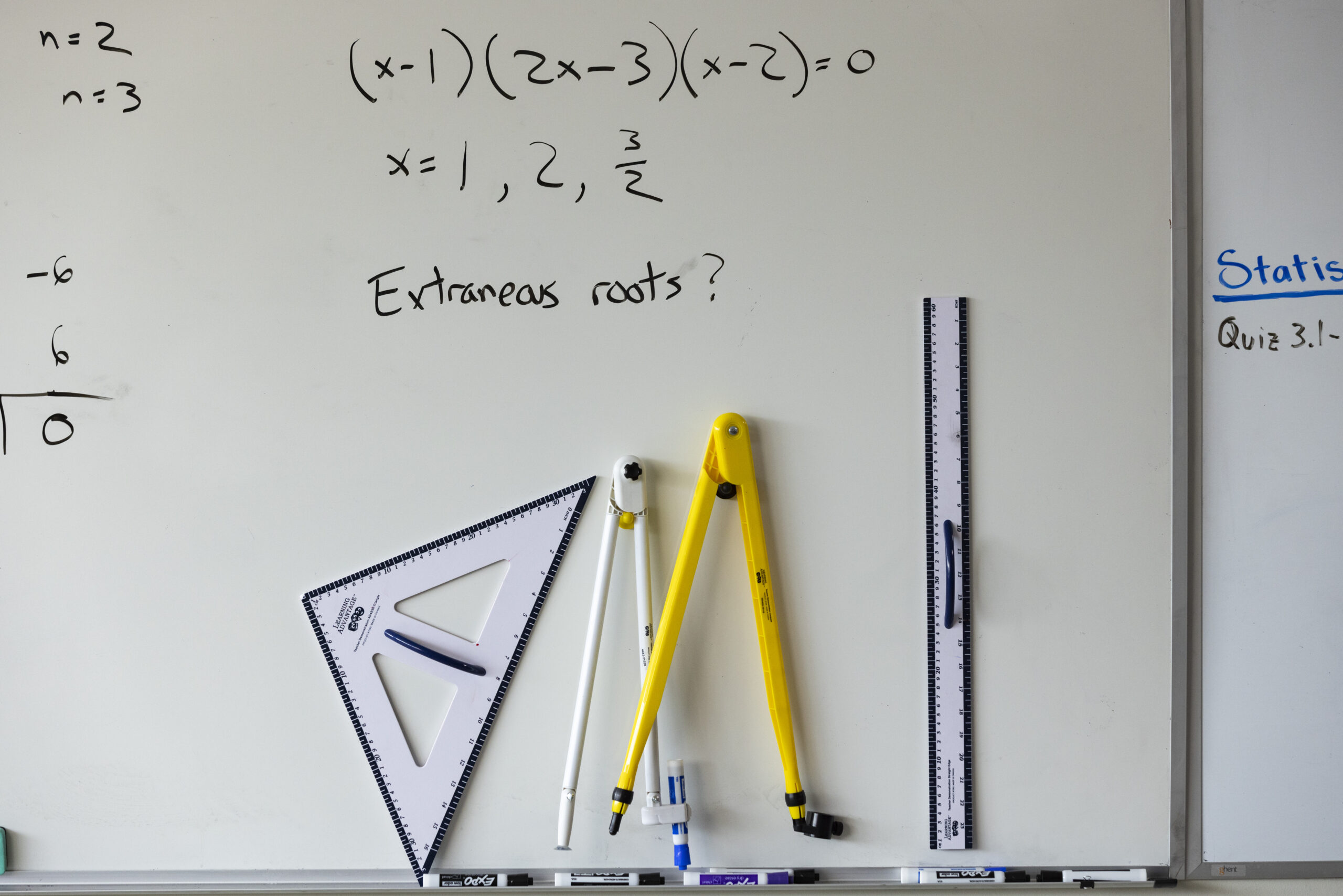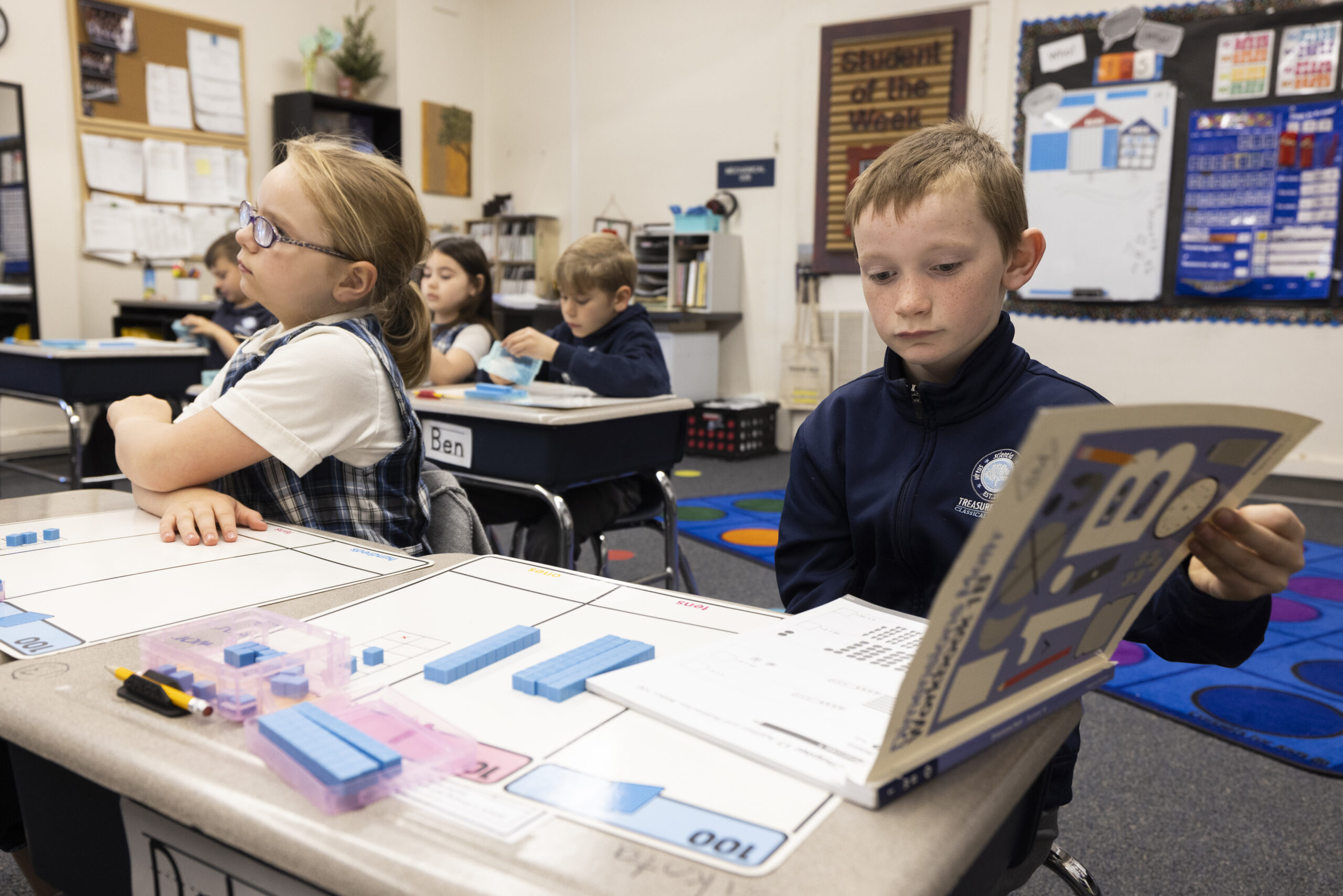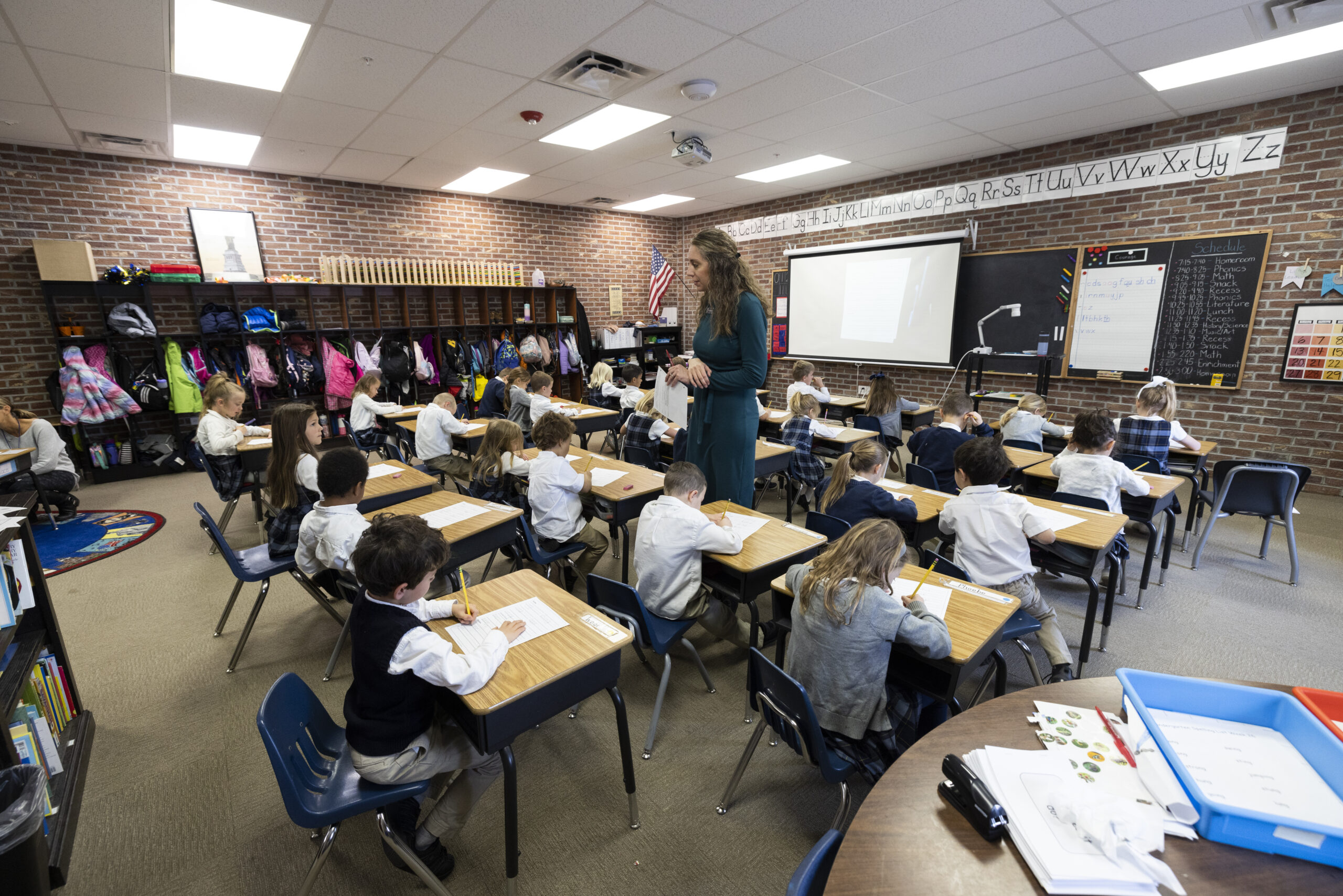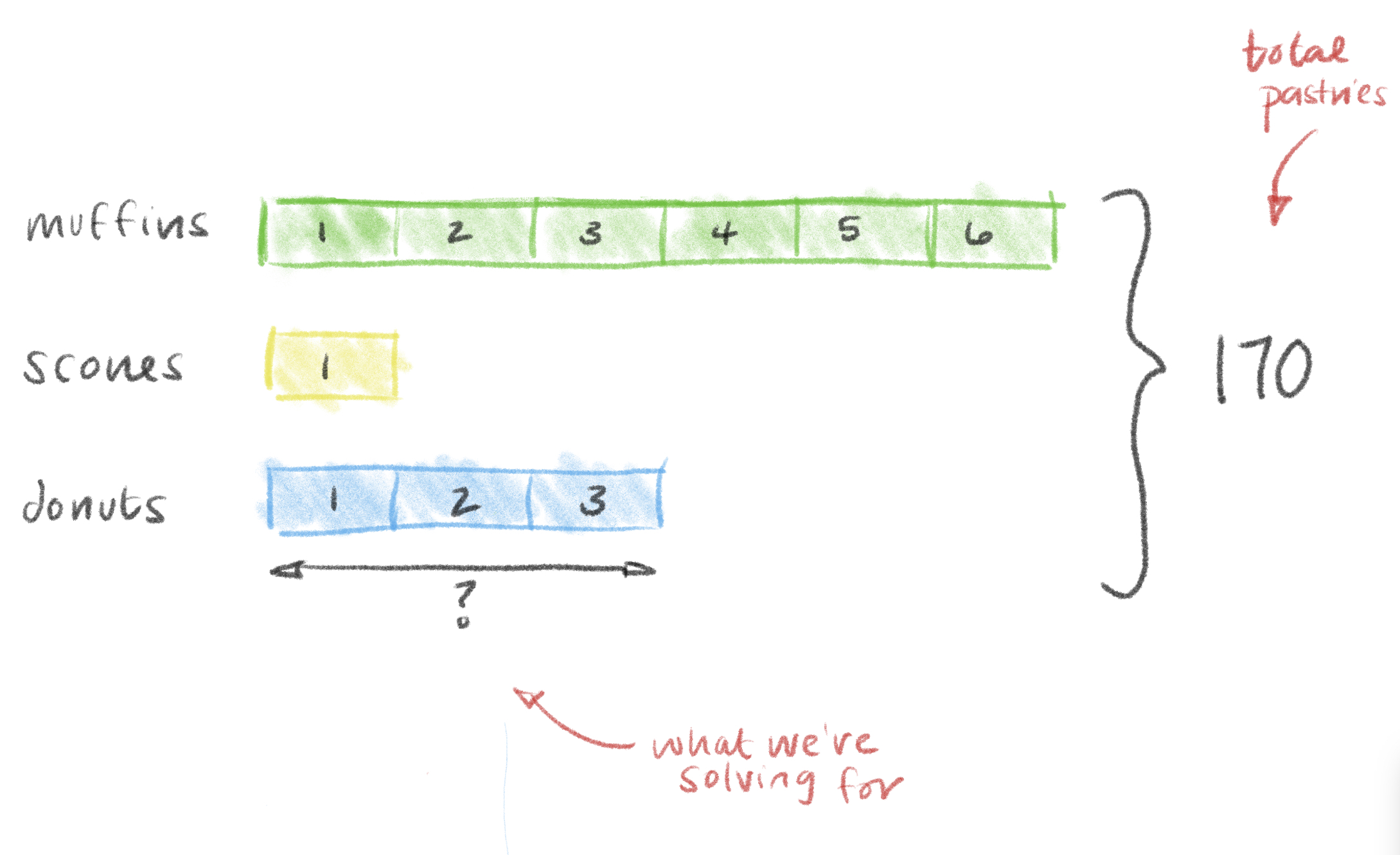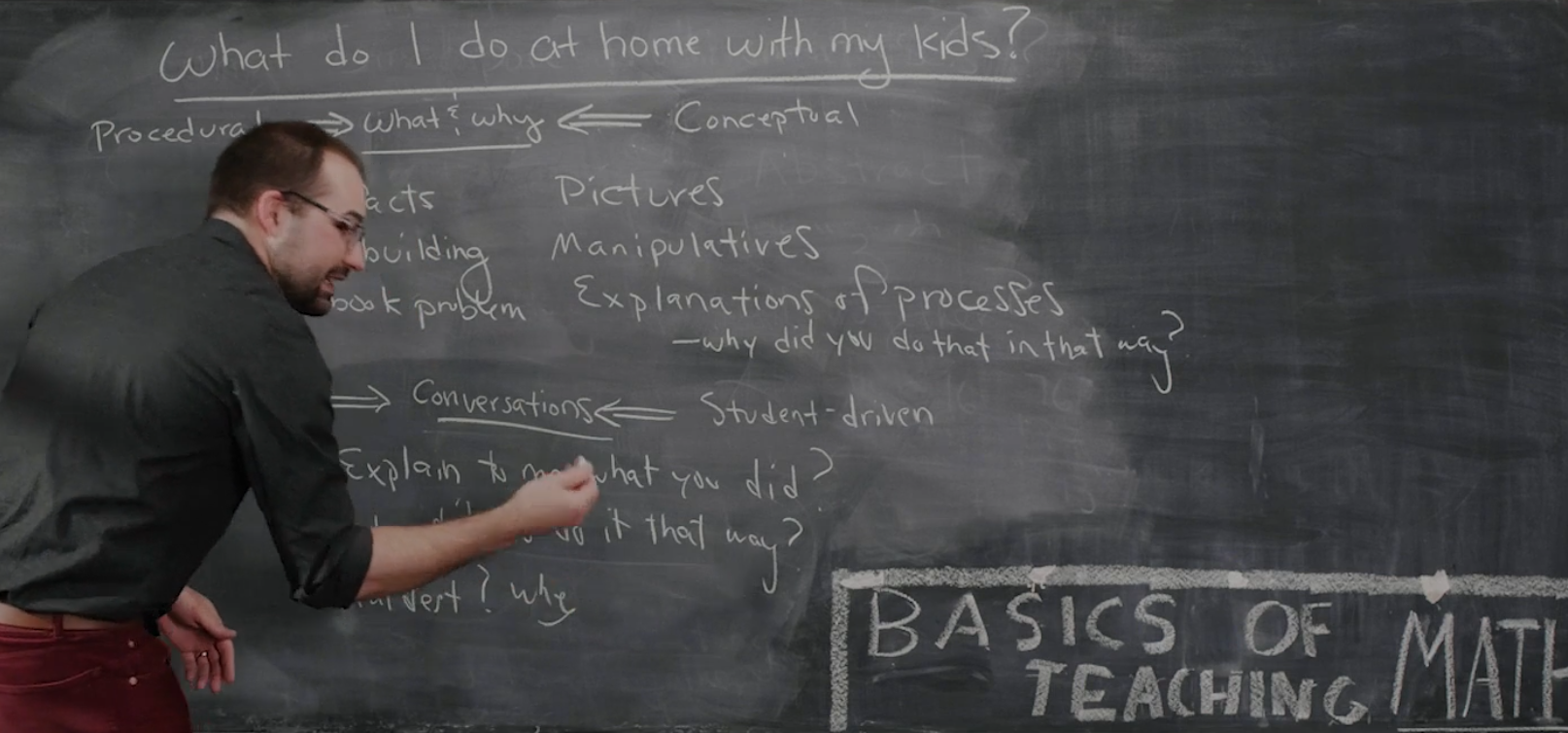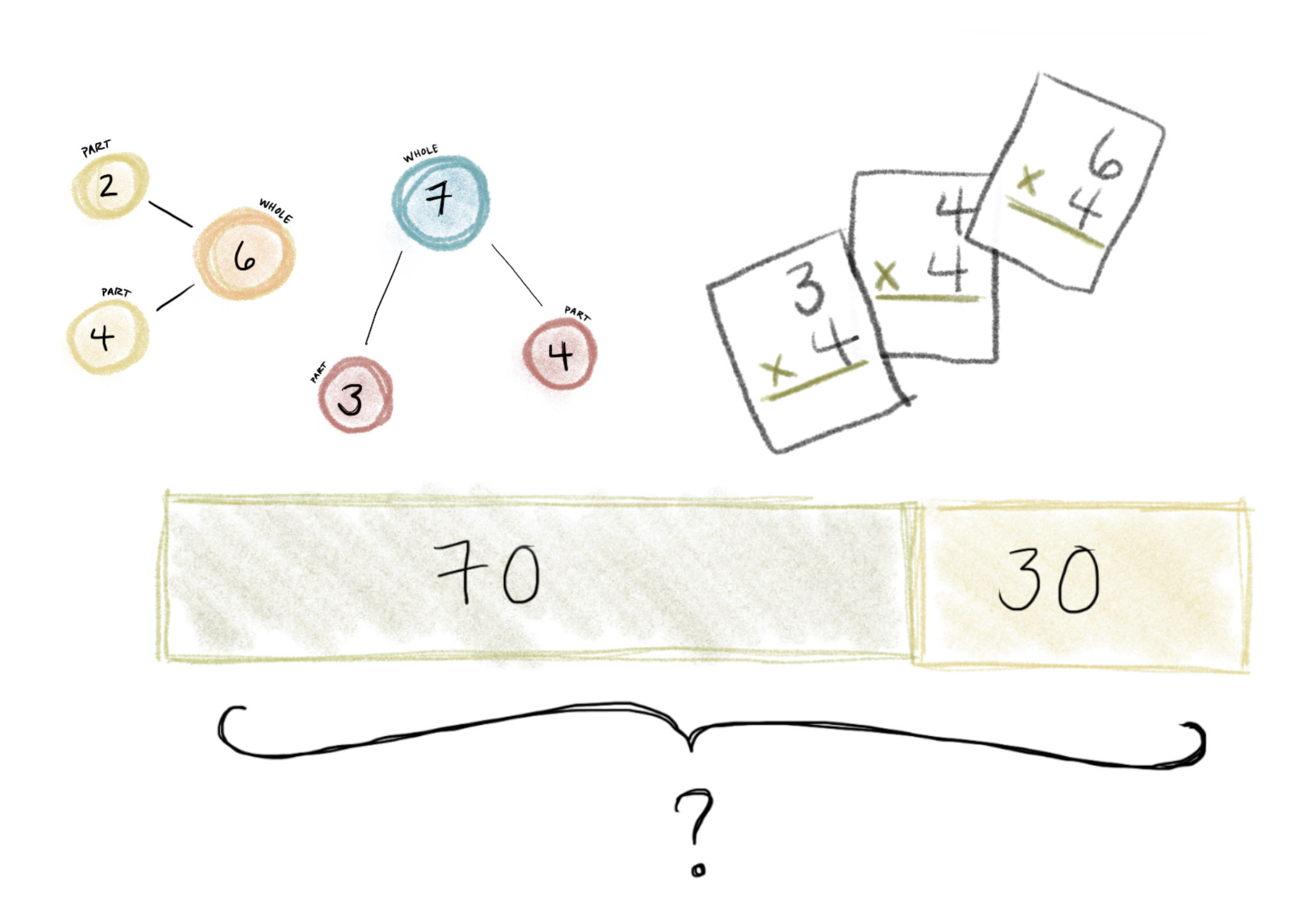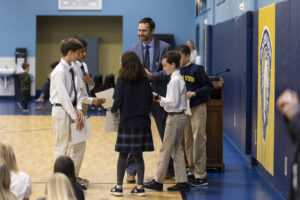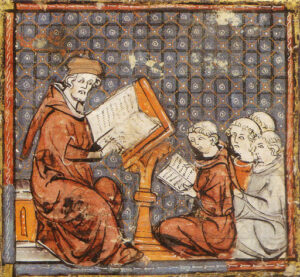an introduction to Hillsdale College’s approach to teaching math in the K-12 years
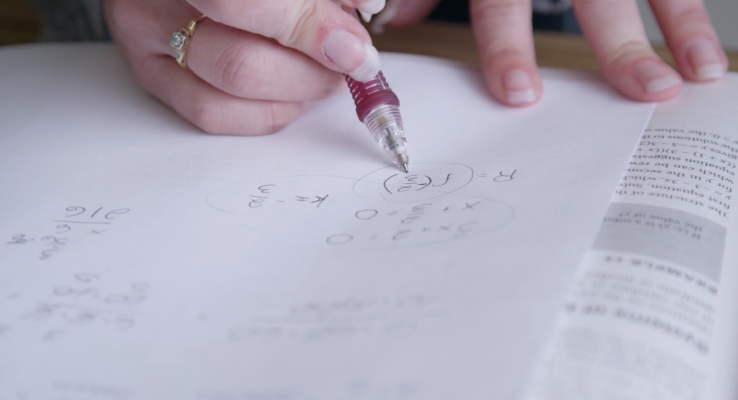
To understand the order and harmony inherent in the subject is the chief aim in the study of mathematics. When students strive toward this goal, they consequently attain several other goals that are important in their own right.
- First, mathematics prepares students better to understand the order and harmony of the universe, including the laws that govern the physical world. The study of mathematics begins as an abstraction of the physical world. The structure in mathematics therefore points to a structure in the universe, and beauty in mathematics points to a corresponding beauty in nature.
- Second, the student is prepared to understand the structure of mathematical thought, and, therefore, to apply this understanding and related reasoning skills to all areas of study. As Morris Kline writes, the student’s mind must be prepared “to pass from a knowledge of the world of matter to the world of ideas.” He continues,
The highest realities blind the person who is not prepared to contemplate them. He is, to use Plato’s famous simile, like one who lives continuously in the deep shadows of a cave and is suddenly brought out into the sunlight. The study of mathematics helps make the transition from darkness to light.
- Third, a proper study of mathematics preparesstudents to apply the language of mathematics to all endeavors, including “practical” pursuits. The practical application of mathematics requires students to be proficient in the language of mathematics. Further, when students understand the order and harmony in the overall subject, they are able to see how specific applications fit within the cohesive whole, and therefore more thoroughly attain procedural and computational proficiency in a given application.
The study of mathematics begins in the elementary school curriculum where it is of vital importance to first lay the proper foundation. To develop the thinking and problem-solving skills necessary for the study of advanced subjects, basic skills must be mastered and the child’s mind carefully prepared. This foundation begins with arithmetic.
Arithmetic is the study of quantity and the relationships between quantities: beginning with the decimal system for representing quantities (in particular whole numbers); progressing through the elementary operations of addition, subtraction, multiplication, and division; and extending into the study of fractions (or parts of a whole). At its most basic level, arithmetic is an abstraction of the physical world. In some ways, it is one of the first formal abstractions to which a child is exposed, and its study is expected of every student. The meaning of a quantity and how it is represented is linked to reality. The same is true concerning the meanings of the four arithmetic operations.
In the study of arithmetic, it is important for the student to understand the relationships between the physical world and the mathematical concept, that is, to move from concrete objects to abstract ideas. Manipulatives offer a bridge from the physical understanding of a mathematical concept to the abstract algorithm that a student will use when he works on a problem, so they are a critical component in a well-rounded math lesson. In this way, as mathematical concepts are extended in the curriculum, the student will learn to “test” new results against that which has been previously established. In fourth grade, for example, students progress from the study of whole numbers to the study of fractions. Many students have difficulty understanding the meaning behind fractions because a proper foundation was not laid in the previous three years of study.
Concerning the structure of mathematics in Arithmetic for Parents, Dr. Ron Aharoni states,
There are other fields in which knowledge is built on previous knowledge, but in no other field do the towers reach such heights, nor do the topmost layers rely so clearly on the bottom ones. …The secret to proper teaching of mathematics lies in recognizing these layers and establishing them systematically.
To successfully understand fractions, students need a thorough understanding of the decimal system and the arithmetic operations. Further, students will require a mastery of the language of mathematics at this level, so called “math facts” and “standard algorithms” for whole numbers, in order to work with fractions as both abstract ideas and arithmetic concerning parts of a whole.
As students progress into the upper school curriculum, the solid foundation laid in the elementary grades—which included the training of the mind to understand the relationship between mathematical concepts—allows for further study in mathematics as abstraction and reasoning take an even larger role.
Abstraction becomes very significant in algebra, which requires abstraction from the arithmetic taught in the first through sixth grades. Representing numbers with letters requires students to understand the fundamental structure of numbers and their operations, including the underlying laws governing arithmetic such as the distributive law and the associative laws.
In the study of geometry, the student returns to first principles, called axioms or postulates, and advances new propositions relying primarily on reasoning skills. Much of the remaining upper school curriculum shifts these studies to the setting of the Cartesian coordinate system, a setting that more naturally allows for measurements of natural events and paves the way to follow the path of such greats as Newton and Leibniz who further developed these ideas in Calculus.
The shift to the Cartesian coordinate system in the seventeenth century helped to usher in the “mathematization” of science, an ever-increasing attempt to discover order in the physical universe through the language of mathematics. This led to a tremendous growth in knowledge in both mathematics and science, but these advancements have come at a cost, especially to our common appreciation of mathematics.
In modern times, mathematics is often understood as a language useful primarily to scientists, not just in the natural sciences, but increasingly in the social sciences. We can see evidence of this view in the direction of the Common Core State Standards in Mathematics and the increasing number of discussions centered on the role mathematics plays in preparing students for STEM careers. The honing of reasoning skills—a critical component of a liberal education—is often downplayed or completely neglected in a mathematics education. The cohesive structure of mathematics is often discarded to obtain more quickly the “useful” results, but then these “useful” results are often useless because students are given the language of mathematics without learning its cohesive structure. Students are thus left without the ability to see how their numbers and measurements make ordered sense of the universe. Preparing students for technical careers is not the true aim of the study of mathematics, but with the proper education a student will be equipped for such pursuits.
Mathematics in a classical education will promote the understanding of order and harmony in the universe. Mathematics, as a language, reveals this order and harmony while also introducing students to the world of abstractions. As students consider how to measure perfect and imperfect circles, how to distinguish between natural and artificial pairs, and how to solve equations in advanced algebra and calculus, they become implicitly aware of the context in which mathematical discoveries arose and of the reasoning that provides mathematics with its structure. Although the study of mathematics has fallen well short of this purpose in modern times, its proper implementation will strengthen any education, especially a classical education.
More Posts about Mathematics
-
Math in the Classical Liberal Arts
Nobody argues that schools ought to teach Shakespeare because it helps students to write office memos. Yet many argue that schools ought to teach Pythagoras because it helps students to become engineers. While engineering and other STEM fields are certainly noble endeavors, would it not be a shame to say that any student who becomes……
-
An Infinite Sum of Infinitesimal Acts
To learn calculus is, at its core, to learn the rules of playing with infinity: the infinitely big and the infinitely small, or infinitesimal. Take the drawing below of a 1×1 square. Its area must be 1. … Continue reading An Infinite Sum of Infinitesimal Acts →
-
Productive Struggle in Math
George Polya, a master in mathematics education in the early twentieth century, is credited with saying that if a problem takes fewer than 24 hours to solve, it isn’t worth solving. When I first heard this, I was discouraged. How can I help my students to understand math if everything worth knowing takes so much……
-
Colored Paper in Math Class
We began our lesson on fractions, and I prepared to say the words I read in the manual the day before. “The numerator is the number above the fraction line. The denominator is the number underneath the fraction line. They represent parts being taken or the total number of parts in the whole, respectively.” As…
-
Playing with Words in Math Class
A well-rounded vocabulary doesn’t just increase students’ comprehension of the material – it empowers them to explore new depths of understanding, and to develop a strong connection with those first mathematicians who developed the words factor, product, and multiple.… Continue reading Playing with Words in Math Class →
-
How Bar Modeling Makes Word Problems Easy in Singapore Math
To help teachers and parents understand Singapore math, I’ve been writing about how although it can seem difficult at first, it’s actually a common-sense approach to mathematics that really gets results. Before you read this post, take a look at an introduction to Singapore math here. One of the most recognizable parts of Singapore math……
-
Quick Tips for Classical Education at Home: Math
This week and next we’re featuring a few simple things students can do to continue their classical education in each subject: literature, history, math, science, art, music, and PE. So, you’re at home for the foreseeable future with your young math student. The textbooks are complicated, and on top of that you have responsibilities of……
-
Why Singapore math?
Parents of students who are new to classical schools know that Singapore math is unlike any math curriculum they’re used to. Why? What makes it so different, and why is Singapore math so popular in homeschooling circles and classical schools? … Continue reading Why Singapore math? →


